
 Offers
Offers-
 Account
Account
-
0
 Favorite
Favorite
-
0
 Basket
Basket


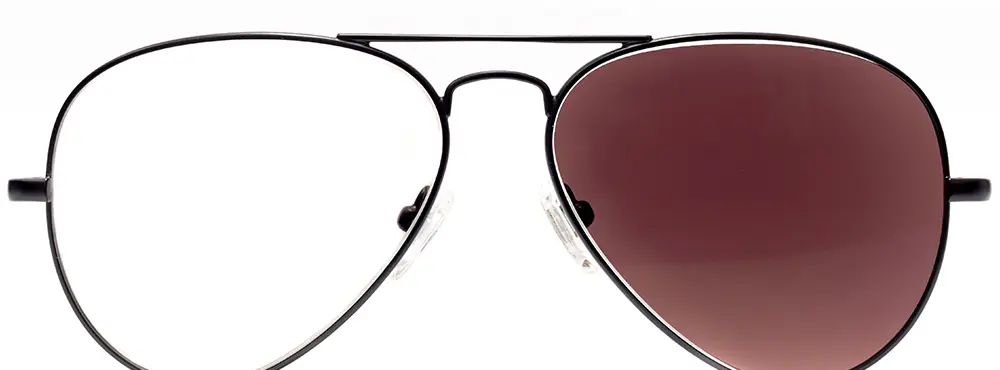
Photochromic lenses are an advanced lens technology that causes lenses to turn darker when you’re outdoors/exposed to UV light and to turn back to clear when you are indoors. Today, you can choose from a wide range of photochromic lenses for glasses and sunglasses in a variety of different colours. The options can be overwhelming, so in this post we break down what photochromic lenses are and whether they are a good option for your lifestyle.
Photochromic lenses, also known as light-adaptive lenses, are eyeglass lenses that automatically darken when exposed to sunlight and ultraviolet rays. This function protects the eyes from damaging ultraviolet radiation.
Photochromic lenses are good for your eyes and offer many benefits. However, whilst glasses with photochromic lenses certainly offer convenience, they may not be the right lenses for you. Here are some pros and cons so that you can weigh up the advantages and disadvantages of photochromic lenses before you make a commitment.
In general, you don’t need to carry sunglasses with you if you have the photochromic technology built into your prescription glasses. However, people exposed to intense periods of extreme heat and high levels of UV should consider a second pair of prescription sunglasses.
You save money by purchasing the one pair of glasses, without having to buy prescription glasses and sunglasses separately.
Carrying around two pairs of glasses also means that you’re much more likely to lose or misplace one of them so having just one pair is better.
They are featured in a range of colours and styles whilst still being able meet your prescription needs. You can choose any frame you like and have them fitted with transition lenses.
Importantly, lenses are also unlikely to change colour inside of your car. This is because the majority of car windshields filter out all the UVB rays and approximately a third of the UVA rays that activate transition. Nevertheless, recent advancements in technology allow some photochromic lenses to be activated by visible light, resulting in a certain level of darkening behind the windshield.

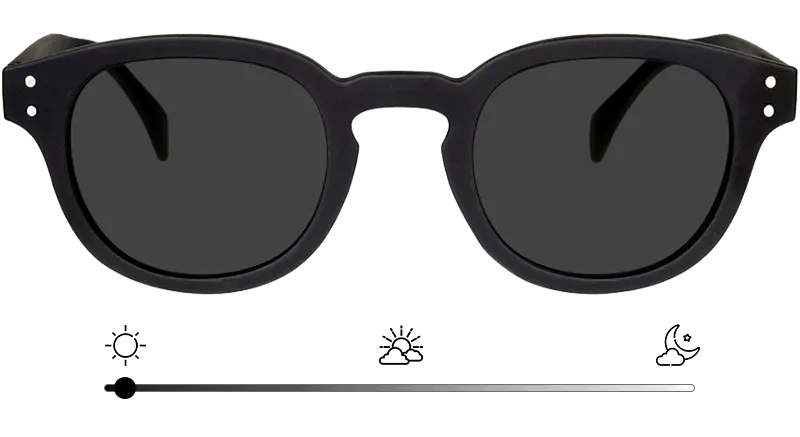
Photochromic lenses are clear or light when the wearer is inside and turn dark when they are outside. At the peak of transition, lenses can become as dark as sunglasses in bright, natural sunlight and as clear as normal prescription glasses when they are not activated. The lenses can be made from glass or plastic and come in a range of colours.
The lenses in photochromic glasses feature extraordinary technology that causes the lenses to change in colour when they are activated by UV rays (ultraviolet radiation).
The UV rays from the sun affect molecules in the lenses, prompting them to change colour and automatically darken as they absorb the sunlight. You can even expect the lenses to darken in cold weather and on cloudy days as UV light still penetrates through cloud.
They adapt through to different darker shades, depending on the levels of UV light. The darkening process can take a few minutes before the tint takes effect on the glasses once you’re outdoors, and it can take a similar time to return to clear when going back indoors.
Photochromic glasses offer great flexibility to anyone needing prescription eyewear, protecting the eyes indoors and outdoors at all times. They can be made according to your normal prescription so that the spectacles will correct your vision and give UV protection at the same time.
In addition to protecting your eyes from UV rays and outdoor glare, photochromic lenses also provide protection from blue light. Exposure to blue light from digital devices such as smartphones and computer screens can lead to digital eye strain, possibly headaches or noticeable eye fatigue.
Photochromic and polarised lenses are not the same. Photochromic lenses are light intelligent lenses which transition and adapt to daylight, whereas polarised lenses have a polarising filter applied to the lens which blocks horizontal light and eliminates reflective glare. Polarised lenses, unlike photochromic lenses, are permanently tinted without changing in colour.
Whilst, photochromic lenses can be ideal for everyday use, polarised lenses are great for daytime and outdoor use only. They are a great option for driving because they reduce reflective glare from the road and the car hood, providing optimum visual comfort and contrast.
Photochromic lenses are also known as transition lenses. Both refer to glasses lenses that change in colour when exposed to bright sunlight.
Transitions is a leading photochromic lens brands, popular due to its advanced technology in lens development. For many it has become a household name that is synonymous with photochromic lenses. That is why photochromic lenses are commonly referred to as transition lenses, but there are many other manufacturers.
There is now a wide selection of photochromic brands to choose from in Ireland and globally, our favourite being Transitions.
Transitions has developed a range of light-adaptive lenses with different properties for different use-cases. Top Transitions lenses products include:
Alternatives include:
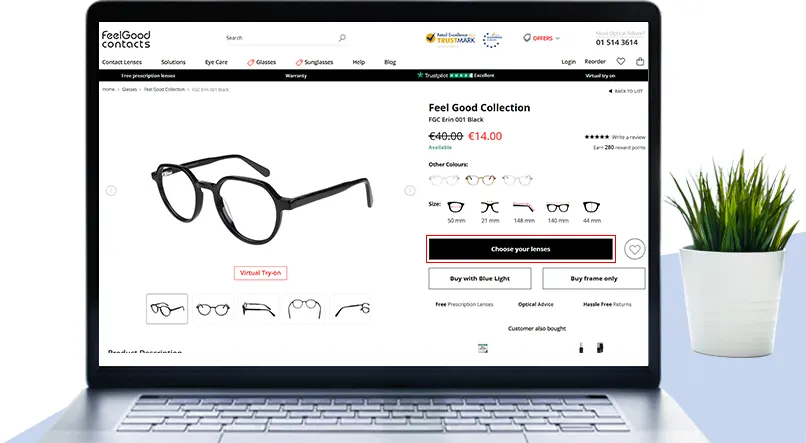
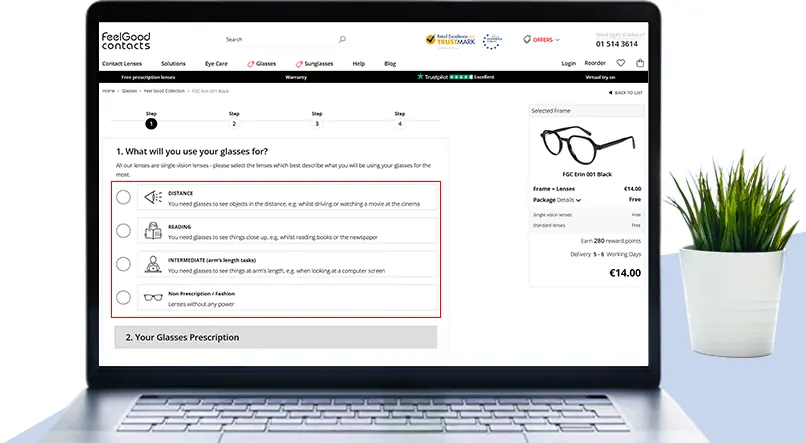
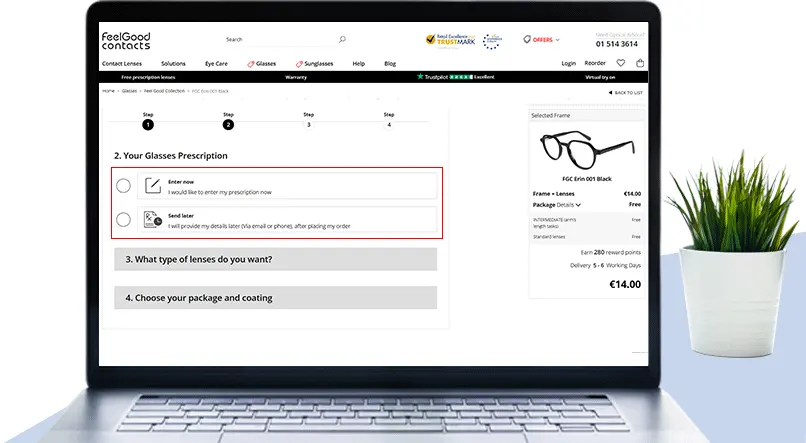
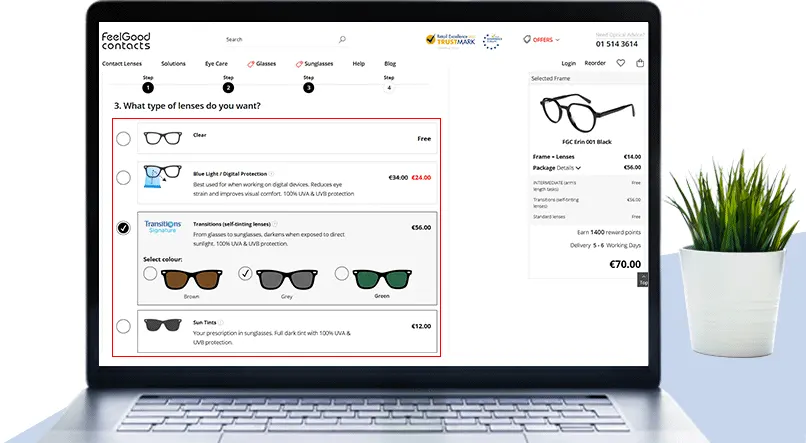
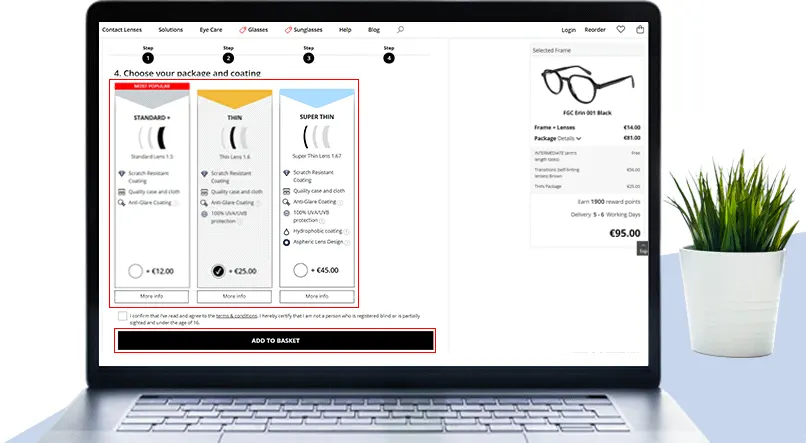
The best colour for transition lenses depends on the colour of the frames you have selected. If you choose black frames for example, we recommend opting for green or grey transition lenses. Brown lenses look best with golden frames.
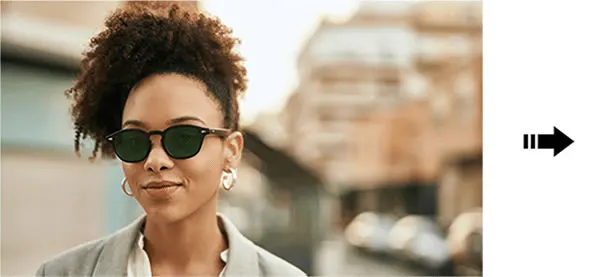
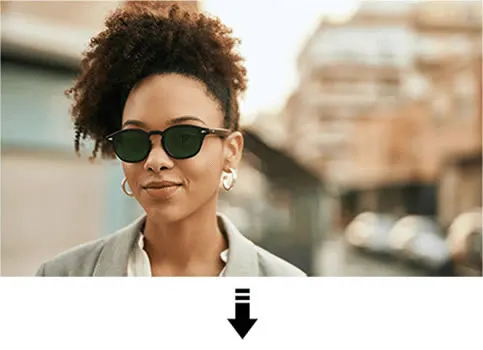



You can test your photochromic glasses by simply putting them on and going outside, especially on a bright, sunny day. You will notice them immediately darken. Once you go back inside, you’ll notice them lighten to clear or to a lighter shade after a few minutes.
If you need any help with buying glasses with photochromic lens technology online or you’re not sure what type of lens you need, don’t hesitate to contact us by email at cs@feelgoodcontacts.ie, on WhatsApp or by phoning us on 01 514 3614.